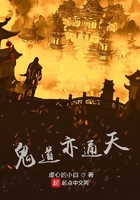Forsyth himself was shot three times, once in the head.His left leg was broken below the knee, and his right thigh was ripped up by a rifle ball, which caused him extreme pain.Later he cut the bullet out of his own leg, and was relieved from some part of the pain.After his rescue, when his broken leg was set it did not suit him, and he had the leg broken twice in the hospital and reset until it knitted properly.
Forsyth's men lay under fire under a blazing sun in their holes on the sandbar for nine days.But the savages never dislodged them, and at last they made off, their women and children beating the death drums, and the entire village mourning the unreturning brave.On the second day of the fighting Forsyth had got out messengers at extreme risk, and at length the party was rescued by a detachment of the Tenth Cavalry.The Indians later said that they had in all over six hundred warriors in this fight.Their losses, though variously estimated, were undoubtedly heavy.
It was encounters such as this which gradually were teaching the Indians that they could not beat the white men, so that after a time they began to yield to the inevitable.
What is known as the Baker Massacre was the turning-point in the half-century of warfare with the Blackfeet, the savage tribe which had preyed upon the men of the fur trade in a long-continued series of robberies and murders.On January 22, 1870, Major E.M.Baker, led by half-breeds who knew the country, surprised the Piegans in their winter camp on the Marias River, just below the border.He, like Custer, attacked at dawn, opening the encounter with a general fire into the tepees.He killed a hundred and seventy-three of the Piegans, including very many women and children, as was unhappily the case so often in these surprise attacks.It was deplorable warfare.But it ended the resistance of the savage Blackfeet.They have been disposed for peace from that day to this.
The terrible revenge which the Sioux and Cheyennes took in the battle which annihilated Custer and his men on the Little Big Horn in the summer of 1876; the Homeric running fight made by Chief Joseph of the Nez Perces--a flight which baffled our best generals and their men for a hundred and ten days over more than fourteen hundred miles of wilderness--these are events so well known that it seems needless to do more than to refer to them.
The Nez Perces in turn went down forever when Joseph came out and surrendered, saying, "From where the sun now stands I fight against the white man no more forever." His surrender to fate did not lack its dignity.Indeed, a mournful interest attached to the inevitable destiny of all these savage leaders, who, no doubt, according to their standards, were doing what men should do and all that men could do.
The main difficulty in administering full punishment to such bands was that after a defeat they scattered, so that they could not be overtaken in any detailed fashion.After the Custer fight many of the tribe went north of the Canadian line and remained there for some time.The writer himself has seen along the Qu'Appelle River in Saskatchewan some of the wheels taken out of the watches of Custer's men.The savages broke them up and used the wheels for jewelry.They even offered the Canadians for trade boots, hats, and clothing taken from the bodies of Custer's men.















